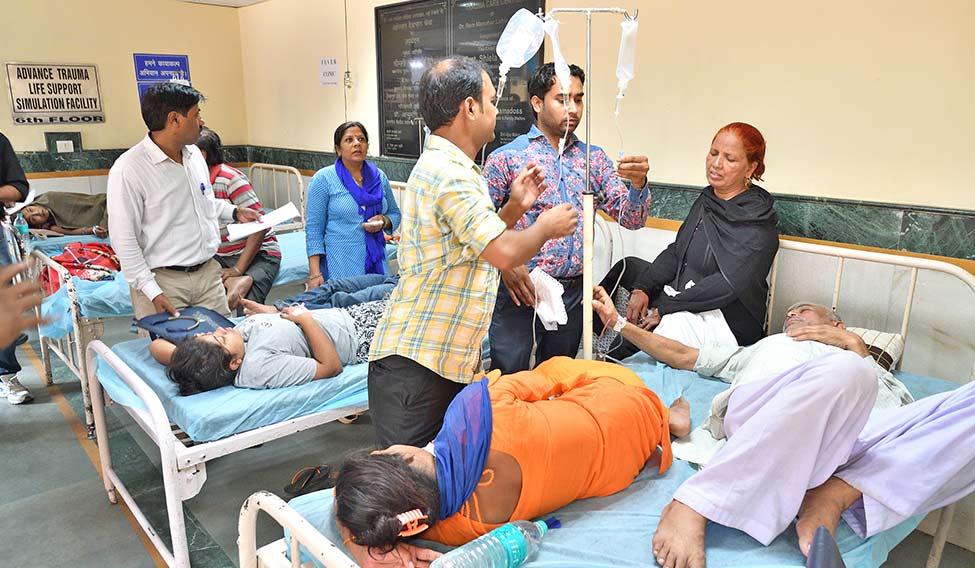In August this year, when the first chikungunya death was reported in Delhi, neither the Bharatiya Janata Party-led Union government nor the Aam Aadmi Party-led state government paid adequate attention to the issue. They just released advisories on dos and don’ts.
In fact, Union Health Minister J.P. Nadda as well as Delhi Health Minister Satyendra Jain said the disease was not fatal. And, instead of taking strong measures to curb the spread of chikungunya and dengue, the Delhi government passed the buck to the Centre and the local bodies.
Chief Minister Arvind Kejriwal, who was recently panned for earmarking Rs 526 crore for publicity—and spending about a crore on chai and samosa—said he did not have the power to buy even a pen, when asked about the dengue and chikungunya menace.
Most administrative bigwigs, including Kejriwal, Jain, Deputy Chief Minister Manish Sisodia and Lt Governor Najeeb Jung, were out of Delhi when the crisis broke out. Jain finally met Nadda on September 16, and notified chikungunya as a “dangerous” disease. Nadda promised all necessary support to the state. The harmony, however, was short-lived.
Two days after his return from the US, Jung faxed Sisodia—who had flown first class to Finland “to learn a lot from their education system”—asking him to return immediately. Delhi Tourism Minister Kapil Mishra (who also handles the water and culture portfolios) quickly responded with a sarcastic letter, criticising Jung for holidaying in the US, and asking Sisodia to cut short his ‘official tour’.
Mishra also shot a video of Jain and himself trying to contact Jung. While Jain is seen busy having his lunch, Mishra keeps dialling the governor. Mishra then claims Jung has blocked his number.
The AAP’s critics were not amused. “There were issues when the BJP was in power at the Centre and the Congress in the state, but they were resolved gracefully. We never did such petty politics over diseases and deaths,” says Congress leader Sharmistha Mukherjee.
Ideally, the preparation for monsoons should have started in February. “The public works department’s website says only 30 per cent drains were desilted by July [when the monsoon sets in],” says Mukherjee.
The municipal bodies have been slammed for doing a shoddy job. Garbage management and sanitation are two major issues plaguing Delhi.
However, Yogendra Singh Mann, director of press and information, South Delhi Municipal Corporation, has a bizarre defence: “Do not relate these issues with the spread of dengue and chikungunya. These mosquitoes breed inside people’s houses, and not outside.”
But aren’t rainwater puddles on roads a breeding ground for Aedes aegypti, the culprit mosquito? Mann quickly changes his stance: “Yes, they are. I know there was some laxity on our part. We need to prepare the city better to deal with seasonal diseases.”
Contrary to statements by Nadda and Jain, studies show an increase in mortality rates because of chikungunya. A report published in the journal Emerging Infectious Diseases analyses the case of Ahmedabad, which had recorded 67,000 chikungunya cases in 2006. As the epidemic peaked between August and November, there was a spike in the city’s death rate, too—“2,944 excess deaths when compared with the average number of deaths in the same months during the previous four years”.
As we go to print, about 3,000 people have been infected, and at least 27 have reportedly died because of chikungunya and dengue in Delhi.








